Essen Spiel 2007 PhotoJournal
Thursday at the Fair
Veteran intrepid Essen reporter Ken Tidwell of
Ken's Game Cabinet
fame is once again on the job!
We who didn't get to go thank you for all the great views, Ken!
Readers, stay tuned for commentary at the end as well!
See the Friday report
here.
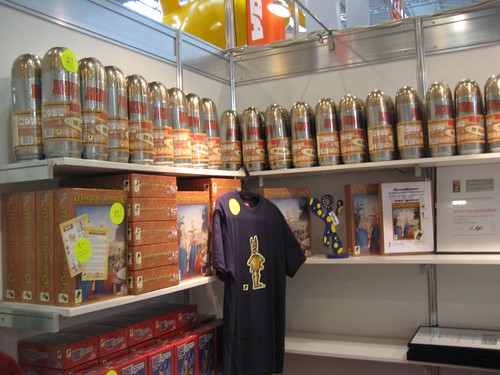
An arsenal's worth of Bang! bullets
|

Schmidt Spiele under the protection of mighty Pikachu
|
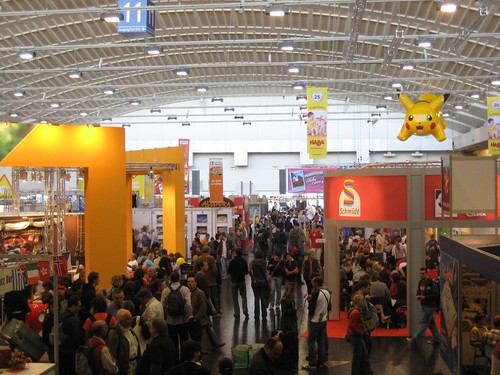
Thursday crowds trend light.
|
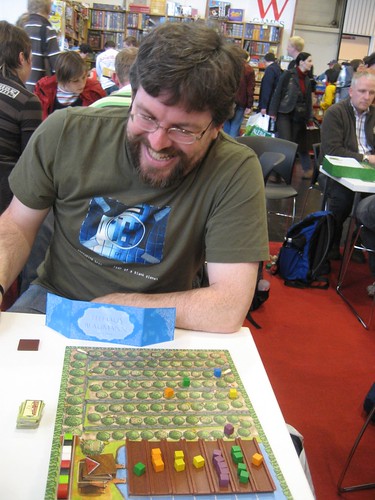
Kurt Adam appears to enjoy Darjeeling ...
|
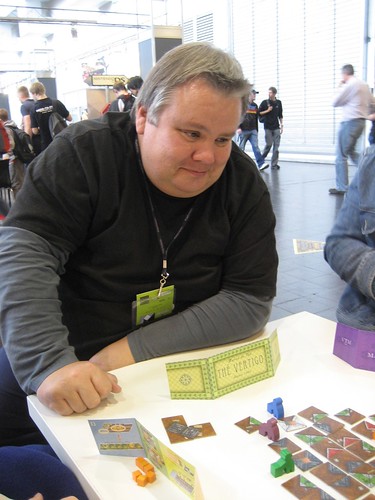
... but Mike Siggins already contemplates a negative review?
|
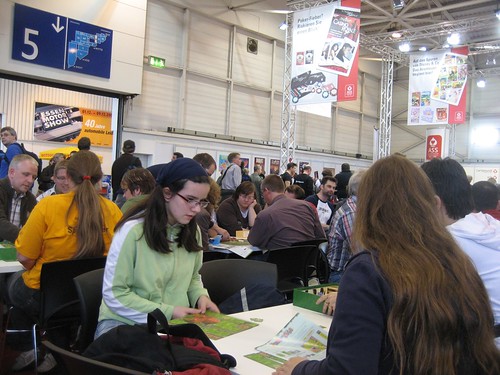
Gaming is active in Hall 5
|

More than one green-haired person this year
(role playing hall)
|
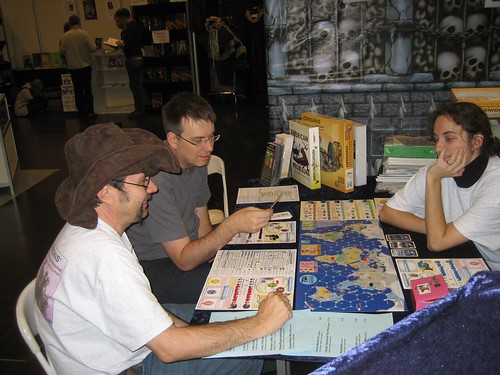
Phil Eklund hosts a playing of his new game, Origins
|
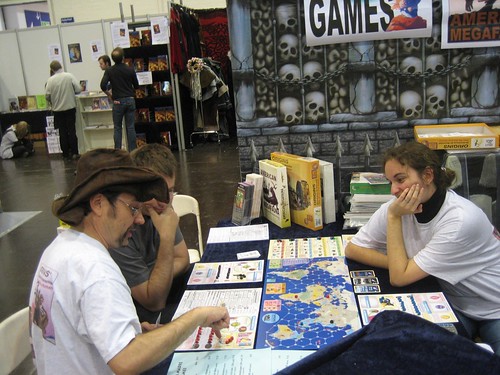
The Sierra Madre Games area
|

More...
|
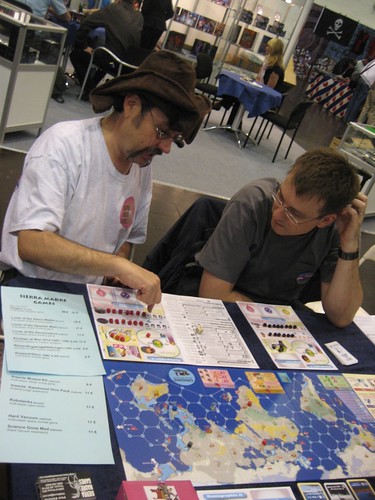
A closer look at Origins
|

Fragor's Antler Island
|
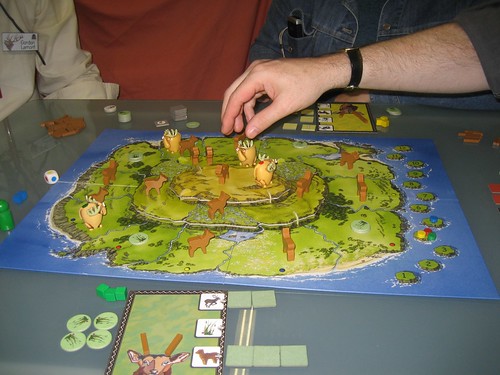
More
|
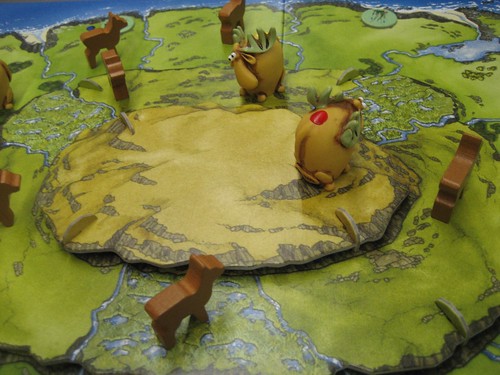
Antler Island detail
|

Antler Island's creator closes his eyes to it all (Gordon Lamont)
|
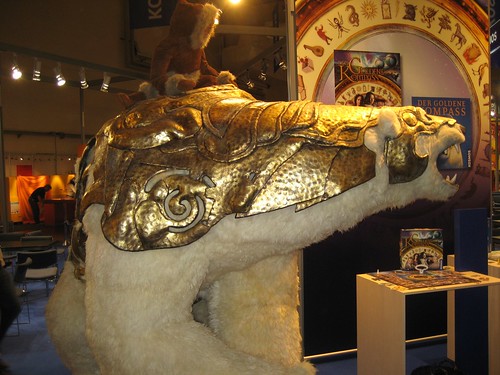
Promotional display for Golden Compass (by Kosmos)
(B)
|
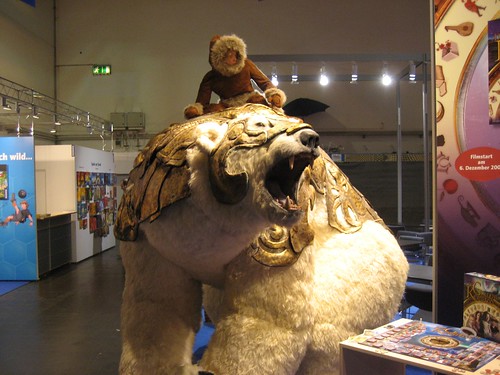
Ice bears they call them
|
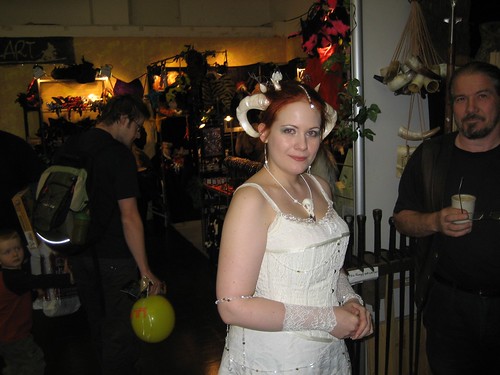
Horny?
|
Sierra Madre Games' Phil Eklund brought 250 copies of
Origins
(review)
to Essen and, after the first day, has sold 150. And he was
still thinking he had brought enough. Poor Phil isn't picturing the
weekend hordes!
Assuming the hordes do, indeed, descend. There's a train strike on here
in Deutschland and it kept the crowd wonderfully light on opening day. But I'm
sure anyone selling games is hoping it all gets resolved soon.
We tried The Circle
(B)
on Essen Eve. This is a game about battling a pulp
fiction, Victorian conspiracy – think The Shadow fighting the Yellow
Claw or some such.
There are a number of tiles representing operatives
grouped into four broad types (colors, suits – four suits are associated
with a type of secret and the fifth is neutral) with four sub-types
(identified by their abilities, their infiltration value which directly
translates to victory point value, and time to mature). On each turn,
you are given four secret points. These can either be spent to start an
operative of your choice on the path to maturity (where they sit for a
number of turns equal to their time to mature) or they can be stored as
a particular type of secret for later use. Secrets are stored on one of
four tracks numbered 1 to 13. When an operative matures if it is bound
to a secret type then the player with a clear majority in that type gets
the operative. If there is a tie then those players may bid secret
points to take the operative. The winner lowers their marker on that
track. If the operative is neutral then it is also marked with a secret
type and all players may bid points of that type for the operative.
Once you have the operative then you may use its abilities or go ahead
and score it by infiltrating the secret society you are battling. The
abilities allow you to raise or lower the secret points of any player by
two, reduce the number of new secret points a player receives on their
turn, etc. Some abilities caused the enemy to score, usually when
capturing or killing enemy agents. If the enemy scored enough points
then everyone would lose (incredibly unlikely as one would have to come
much closer to finishing the game than I think most groups playing this
game will bother with). Once an ability is used, however, the operative
must once again be matured for 3 to 7 turns, depending on the type of
operative. Most players just chose to score them immediately and we have
extra hair here, as well. On the back of each operative there is one
quarter of a picture of a moth, the symbol of the enemy. If you manage
to complete a moth image then you score one extra point. Woo. Hoo. The
entire game felt like it was going in slow motion. And the most
interesting thing happening – using the operative abilities – was so
slow to use due to the need to re-mature the operatives that no one was
bothering. The game crashed and burned after about 45 minutes as all
that remained was an odd auction game and there seems to be a heavy
backlash against auctions.
On the stands we tried Patrizier,
(review)
which was a serviceable game about
dominating regions by laying tiles. Cards control where and how many
tiles you can lay. When you lay in a region you also collect a face up
card waiting there. Cards may also include one of three faces with a
bonus going to the holder of the majority in each at the end. The cards
may also contain actions that allow you to grab a card from anywhere or
shift tiles. Tiles are laid in one of two stacks in each region. The
majority in the largest stack scores high points for the region and
majority in smaller scores the smaller value. Region scores when total
tiles in region equals a target. All cards for a region must be played
in order to reach the target. It worked, but was not exciting. But it
did work, which is turning out to be something of an oddity.
Darjeeling
(review)
was also tried on stand. This is a card melding game. Players
collect cards from a tableau by moving their tea-cutter figure around on
the tableau. Once they have a single-suited meld assembled, they score
it using a clever mechanism that minor league penalizes frequent play of
melds in the same suit. Players also start the meld moving down a
scoring track. The first three spaces pay 3 points per card in the meld
at the start of that players turn, the next three (?) pay 2 and the last
3 pay 1. Each time a new meld is scored the older ones are pushed down.
Lots of timing having to do with when you meld and whether or not your
husband notices that he could meld and prevent you from winning the
game. There were also complaints that the tableaus could get crowded (i.e.
lots of tea-cutters cutting across each others path) which leads to an
inability to plan (a theme at this Essen). Perhaps better with less than five?
Players who clump up in the collection
process are at a disadvantage. The selection in the collection field is
also completely random and there's not a lot that players can do if they
get a bad deal up there. Finally, it is a win by waiting out the
patience of the other players game. Never my favorite.
We tried the new Bohn game, Bohnröschen,
(B)
which is a Was Sticht-lite really, bolted
on to Bonhanza. The goals are laid out in a track. First to reach the
end scores five taler and causes all other players to lose one taler for
every goal they are behind the finish. Good fun in the same light mold
as the other bean games.
One tip: remember that you can pay to skip a
goal. Not much in this box for English-only speakers except the cute wooden
bean figures used to track progress on the goal track.
Amigo is also offering two books of Bohn-variants. I'll try to snag the
smaller of the two. And a wooden bean-crate to hold all the official
Amigo expansions.
We tried Fragor's Antler Island
(review)
on stand, as well.
And it may be the best so
far this run. Lots of good bits: sex theme, moose figures,
pre-programmed moves that kept things hopping, lots of different paths to
victory, and out in 45. Highly recommended, even with this larger print
run of 2500. (Very different from Hameln! And the sheep game is now out
from Zoch.)
In the evening we played two that didn't work for me: the Japanese Origin of Falling Water
(B)
and the Czech League of Six.
(B)
Origin of Falling Water is a trick taking game where the tricks are played in
reverse order (last first). Once all six tricks are played, you resolve
them. Look at the first, consider cards played by lead player, high card
in that suit wins that trick and is now lead, repeat. Trick winners get
card with values 1 to 3 in blue or 1, 2 or 4 in red. Total red and
subtract blue (could have this backwards) – because there isn't enough
chaos here.
League of Six is another accountancy foobar. Lots of interesting
mechanics, but the whole felt out of control to me.
See on-line rules for how the heck it works (damned convoluted). But it
really blew up once players had collected their resources and started
buying on a Bazaar-like
exchange track. One player could start a
Bazaar-formula and later players were forced to complete. The completed
formula paid the player who started it a bonus. Since your resources
were being drawn out of your hand, only the first player could make much
of a plan. How do you get to be the first player? Waaaay back in the
bidding for lots phase one thing that could show up in a lot were the
bits to determine player order. Except that we mostly tied on those so
you also had to look at the region number. And somehow the minutes past
the hour were factored in, but only once totalling the freckles on a
random limb.
– Ken Tidwell, October 18, 2007
See the Friday report
here.
Other Links Around the Web
Comments to
spotlightongames.com

















